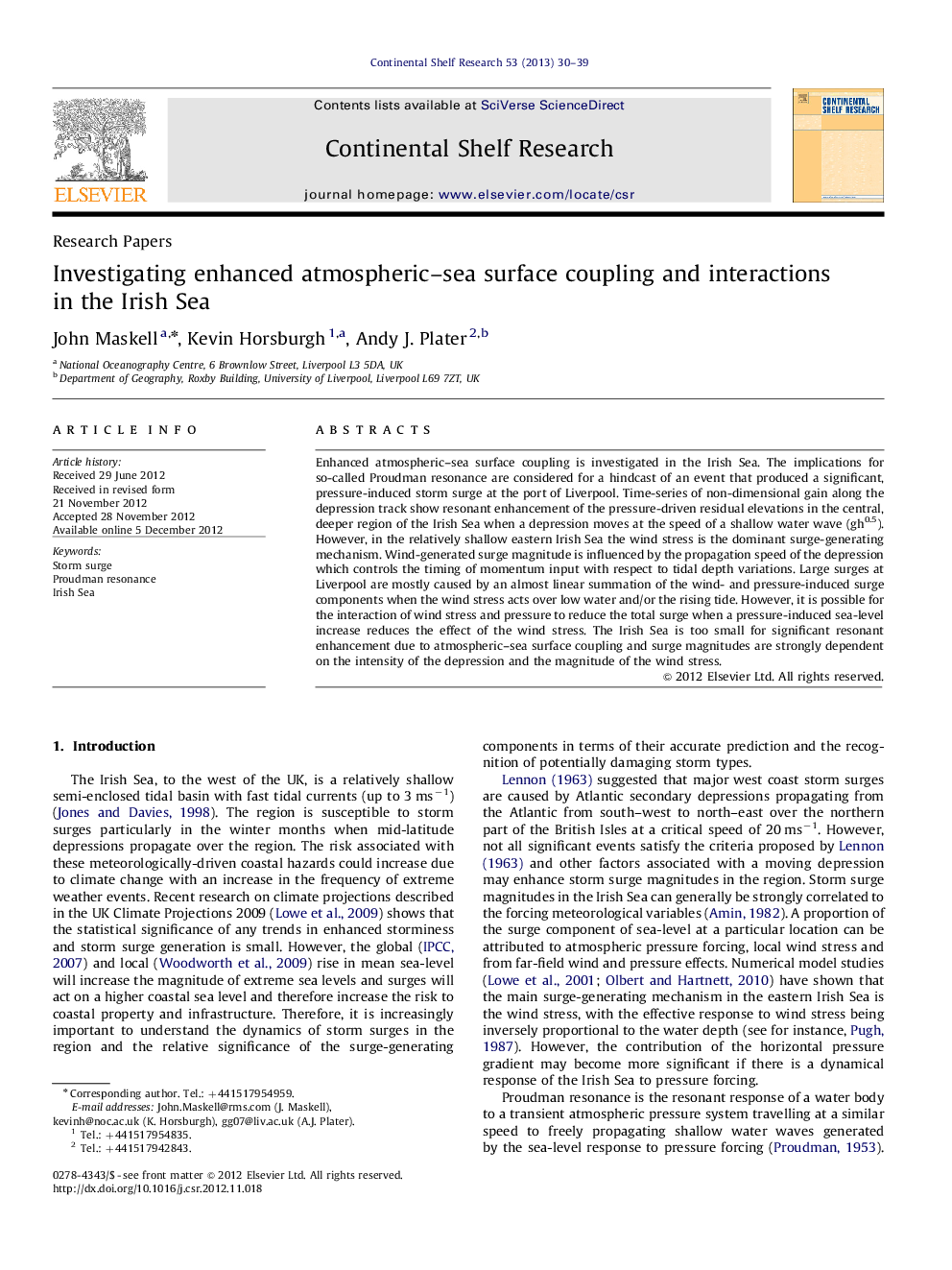| Article ID | Journal | Published Year | Pages | File Type |
|---|---|---|---|---|
| 4532267 | Continental Shelf Research | 2013 | 10 Pages |
sEnhanced atmospheric–sea surface coupling is investigated in the Irish Sea. The implications for so-called Proudman resonance are considered for a hindcast of an event that produced a significant, pressure-induced storm surge at the port of Liverpool. Time-series of non-dimensional gain along the depression track show resonant enhancement of the pressure-driven residual elevations in the central, deeper region of the Irish Sea when a depression moves at the speed of a shallow water wave (gh0.5). However, in the relatively shallow eastern Irish Sea the wind stress is the dominant surge-generating mechanism. Wind-generated surge magnitude is influenced by the propagation speed of the depression which controls the timing of momentum input with respect to tidal depth variations. Large surges at Liverpool are mostly caused by an almost linear summation of the wind- and pressure-induced surge components when the wind stress acts over low water and/or the rising tide. However, it is possible for the interaction of wind stress and pressure to reduce the total surge when a pressure-induced sea-level increase reduces the effect of the wind stress. The Irish Sea is too small for significant resonant enhancement due to atmospheric–sea surface coupling and surge magnitudes are strongly dependent on the intensity of the depression and the magnitude of the wind stress.
► Proudman resonance can occur in a limited region of the Irish Sea. ► Resonant sea-level increase is less significant than other factors. ► Non-linear interaction between wind- and pressure-driven surges. ► Surges dependent on the strength of the wind stress and depression intensity.
